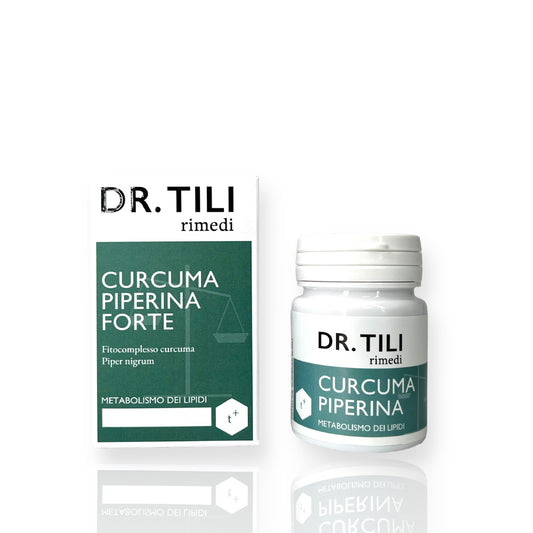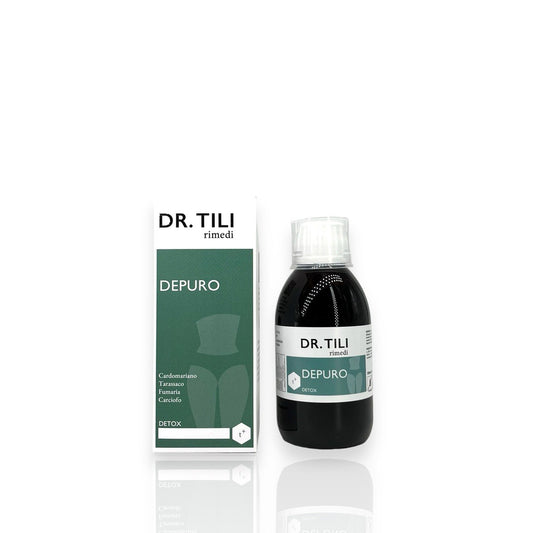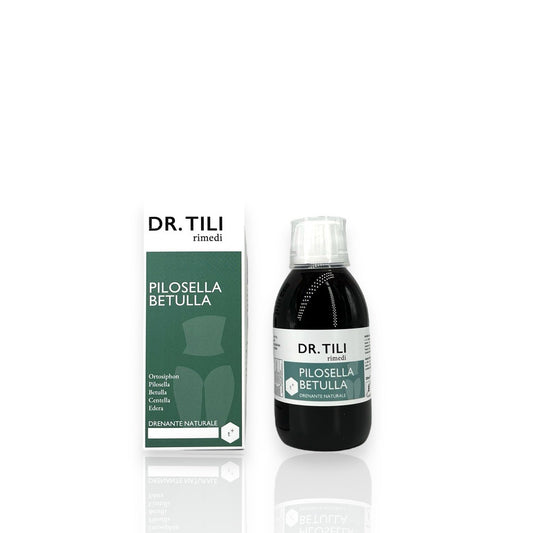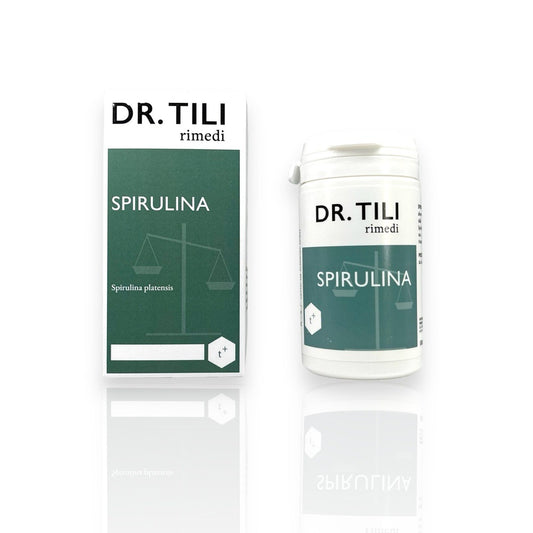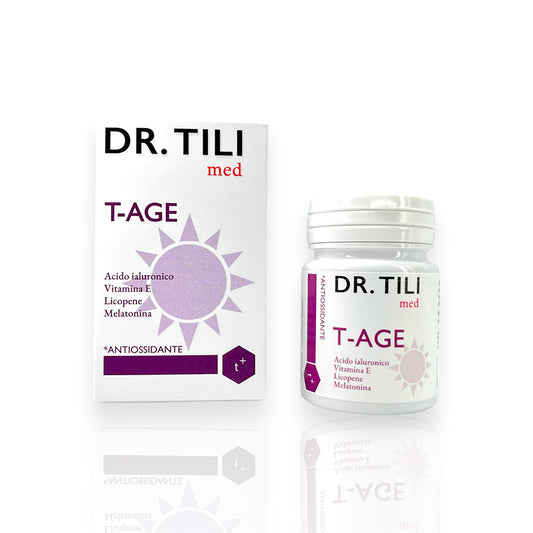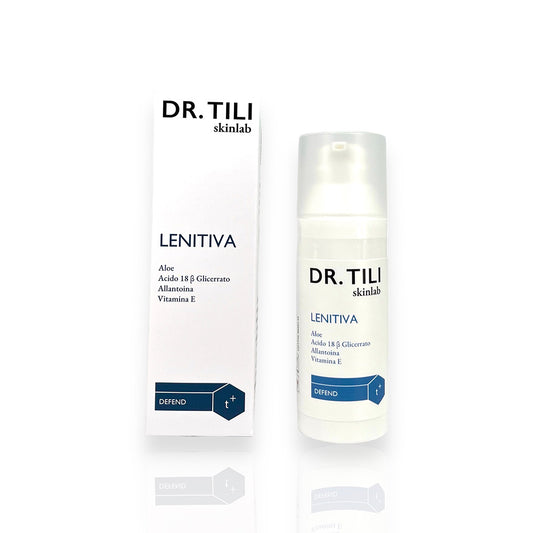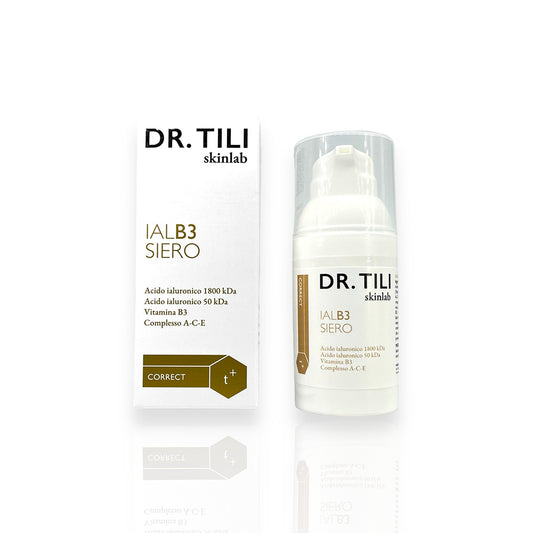BAYER SpA
Lasonil anti-inflammatory and antirheumatic 220mg 12 coated tablets
Lasonil anti-inflammatory and antirheumatic 220mg 12 coated tablets

Pickup available at Farmacia Tili
Usually ready in 24 hours
PRODUCT NET WEIGHT
PRODUCT NET WEIGHT
EAN
EAN
032790038
MINSAN
MINSAN
032790038
Lasonil Anti-inflammatory and Anti-rheumatic 220 mg is a drug based on naproxen sodium , belonging to the class of nonsteroidal anti-inflammatory drugs (NSAIDs) . It is indicated for the symptomatic treatment of mild to moderate pain, including headache , back pain , joint and muscle pain , toothache , colds and menstrual pain . It is also indicated for minor pain in arthritis and arthrosis.
ACTIVE INGREDIENTS
Active ingredients contained in Lasonil anti-inflammatory and antirheumatic 220mg 12 film-coated tablets - What is the active ingredient of Lasonil anti-inflammatory and antirheumatic 220mg 12 film-coated tablets?
One film-coated tablet contains: naproxen sodium 220 mg, equivalent to 200 mg naproxen. For the full list of excipients, see section 6.1.
EXCIPIENTS
Composition of Lasonil anti-inflammatory and antirheumatic 220mg 12 film-coated tablets - What does Lasonil anti-inflammatory and antirheumatic 220mg 12 film-coated tablets contain?
Microcrystalline cellulose, povidone K 30, talc, magnesium stearate; film coating: Opadry Blue YS 1-4215.
DIRECTIONS
Therapeutic indications Lasonil anti-inflammatory and antirheumatic 220mg 12 film-coated tablets - Why is Lasonil anti-inflammatory and antirheumatic 220mg 12 film-coated tablets used? What is it used for?
Symptomatic treatment of headache, backache, joint and muscle pain, toothache and colds. It is also indicated against menstrual pain and minor pain in arthritis and arthrosis.
CONTRAINDICATIONS SIDE EFFECTS
Contraindications Lasonil anti-inflammatory and antirheumatic 220mg 12 film-coated tablets - When should Lasonil anti-inflammatory and antirheumatic 220mg 12 film-coated tablets not be used?
- Hypersensitivity to the active substance or to any of the excipients listed in section 6.1. - History of asthma, urticaria or allergic-type reactions following the intake of acetylsalicylic acid or other analgesics, antipyretics, non-steroidal anti-inflammatory drugs. - Severe renal insufficiency (creatinine clearance less than 20 ml/min) - Severe cardiac insufficiency - Liver cirrhosis and severe hepatitis - During intensive therapy with diuretics - Gastric and duodenal ulcer - Subjects with active haemorrhage or at risk of haemorrhage - During treatment with anticoagulants as it synergises their action - Pregnancy and breast-feeding (see section 4.6) - Adolescents under 16 years of age - History of gastrointestinal bleeding or perforation related to previous active treatments or history of recurrent peptic ulcer/haemorrhage (two or more distinct episodes of proven ulceration or bleeding).
DOSAGE
Quantity and method of taking Lasonil anti-inflammatory and antirheumatic 220mg 12 film-coated tablets - How to take Lasonil anti-inflammatory and antirheumatic 220mg 12 film-coated tablets?
Method of administration The film-coated tablet should be taken orally with a glass of water, on a full stomach. Dosage Adults and adolescents over 16 years: 1 tablet every 8 - 12 hours. Greater benefit may be obtained by starting with 2 tablets followed by 1 tablet every 12 hours, as needed. The maximum daily dose is 3 tablets. Undesirable effects may be minimised by using the lowest effective dose for the shortest duration necessary to control symptoms (see section 4.4). Do not use for more than 7 days for the symptomatic treatment of pain and for more than 3 days for colds without medical supervision. Additional information for special populations Paediatric population Safety and efficacy in children under 16 years have not yet been established (see section 4.3). Elderly Use the minimum dosage. Patients with renal, hepatic or cardiac insufficiency In patients with renal and/or cardiac insufficiency and/or severe hepatic insufficiency, a dosage reduction may be necessary.
CONSERVATION
Storage Lasonil anti-inflammatory and antirheumatic 220mg 12 film-coated tablets - How is Lasonil anti-inflammatory and antirheumatic 220mg 12 film-coated tablets stored?
Store in the original package in order to protect from light.
WARNINGS
Warnings Lasonil anti-inflammatory and antirheumatic 220mg 12 film-coated tablets - About Lasonil anti-inflammatory and antirheumatic 220mg 12 film-coated tablets it is important to know that:
The product is not indicated for gastrointestinal tract pain. General warnings The use of Lasonil anti-inflammatory and antirheumatic should be avoided in conjunction with NSAIDs, including selective COX-2 inhibitors. Undesirable effects can be minimized by using the lowest effective dose for the shortest duration of treatment necessary to control symptoms (see paragraphs below on gastrointestinal and cardiovascular risks). Anaphylactic/anaphylactoid reactions Analgesics, antipyretics, non-steroidal anti-inflammatory drugs can cause hypersensitivity reactions, potentially fatal, including those of the anaphylactic (anaphylactoid) type, even in subjects with no history of hypersensitivity following exposure to this type of drug. These reactions may occur in subjects with a history of angioedema, altered bronchial reactivity (asthma), rhinitis, nasal polyposis, allergic diseases, chronic respiratory diseases or sensitivity to acetylsalicylic acid. This may also occur in patients who experience allergic reactions (skin reactions, urticaria) to naproxen or other NSAIDs. After administration of analgesics, antipyretics, nonsteroidal anti-inflammatory drugs, worsening of asthma is possible. Anaphylactoid reactions, such as anaphylaxis, may be fatal. Skin reactions Serious skin reactions, some of them fatal, including exfoliative dermatitis, Stevens-Johnson syndrome, and toxic epidermal necrolysis, have been reported very rarely in association with the use of NSAIDs (see section 4.8). Patients appear to be at higher risk in the early stages of therapy: the onset of the reaction occurs in the majority of cases within the first month of treatment. Lasonil anti-inflammatory and anti-rheumatic must be discontinued at the first appearance of skin rash, mucosal lesions, or any other sign of hypersensitivity. Gastrointestinal bleeding, ulceration and perforation: Gastrointestinal bleeding, ulceration and perforation, which can be fatal, have been reported with all NSAIDs at anytime during treatment, with or without warning symptoms or a previous history of serious GI events. The risk of GI bleeding, ulceration or perforation is higher with increasing NSAID doses, in the elderly and in patients with a history of ulcer, particularly if complicated with haemorrhage or perforation (see section 4.3). These patients should start treatment on the lowest dose available. Concomitant use of protective agents (e.g. misoprostol or proton pump inhibitors) should be considered for these patients, and also for patients requiring concomitant aspirin or other drugs likely to increase gastrointestinal risk (see below and section 4.5). Patients with a history of gastrointestinal toxicity, particularly when elderly, should report any unusual gastrointestinal symptoms (especially gastrointestinal bleeding) particularly in the initial stages of treatment. Caution should be advised in patients receiving concomitant medications which could increase the risk of ulceration or bleeding, such as oral corticosteroids, anticoagulants such as warfarin, selective serotonin reuptake inhibitors or anti-platelet agents such as acetylsalicylic acid (see section 4.5). When gastrointestinal bleeding or ulceration occurs in patients receiving Lasonil anti-inflammatory and antirheumatic, the treatment should be withdrawn. NSAIDs should be administered with caution to patients with a history of gastrointestinal disease (ulcerative colitis, Crohn's disease) as these conditions may be exacerbated (see section 4.8). Sodium and fluid retention in cardiovascular disease and peripheral oedema Caution is advised before initiating treatment in patients with a history of hypertension and/or heart failure since fluid retention, hypertension and oedema have been reported in association with NSAID therapy. Cardiovascular and cerebrovascular effects Clinical trial and epidemiological data suggest that use of coxibs and some NSAIDs (particularly at high doses and in long term treatment) may be associated with a small increased risk of arterial thrombotic events (for example myocardial infarction or stroke). Although some data suggest that use of naproxen (1000 mg/day) may be associated with a lower risk, some risk cannot be excluded. There are insufficient data regarding the effects of low dose naproxen 220 to 660 mg to draw firm conclusions on possible thrombotic risks. Naproxen may reduce the antiplatelet effect of acetylsalicylic acid. Patients should consult their doctor if they are being treated with acetylsalicylic acid and intend to use naproxen sodium/naproxen (see section “Interactions with other medicinal products and other forms of interaction”). Hepatic effects Serious liver reactions, including jaundice and hepatitis (some fatal) have been reported with the use of naproxen sodium or other nonsteroidal anti-inflammatory drugs. Cross-reactivity has also been reported. Special populations Elderly Elderly patients have an increased frequency of adverse reactions to NSAIDs, especially gastrointestinal bleeding and perforation, which may be fatal (see section 4.2). Women planning pregnancy Precautions regarding fertility The use of Lasonil anti-inflammatory and anti-rheumatic, as with any drug inhibiting the synthesis of prostaglandins and cyclooxygenase, is not recommended in women intending to become pregnant due to effects on ovulation, reversible upon discontinuation of treatment (see section 4.6). The administration of Lasonil anti-inflammatory and anti-rheumatic must be suspended in women who have fertility problems or who are undergoing fertility investigations. Patients with additional medical history Subjects with the following additional medical histories must be carefully and adequately monitored when taking Lasonil anti-inflammatory and anti-rheumatic: - with coagulation disorders or taking medicinal products that affect haemostasis, since naproxen inhibits platelet aggregation and may prolong bleeding time. - with hepatic insufficiency - who have previously experienced side effects with analgesics, antipyretics and non-steroidal anti-inflammatory drugs The product should be administered with caution in case of concomitant treatment with other drugs, such as other analgesics, steroids or intensive diuretic therapy. Sodium content This medicinal product contains less than 1 mmol (23 mg) sodium per tablet, that is to say essentially "sodium-free". Taking the maximum daily dosage of 3 tablets results in a maximum intake of 60 mg sodium equivalent to 3% of the maximum daily intake recommended by the WHO which corresponds to 2 g sodium per day for an adult.
INTERACTIONS
Interactions Lasonil anti-inflammatory and anti-rheumatic 220mg 12 film-coated tablets - Which medicines or foods can modify the effect of Lasonil anti-inflammatory and anti-rheumatic 220mg 12 film-coated tablets?
Ciclosporin: with concomitant use of ciclosporin, the concentration of the latter may be increased, increasing the risk of nephrotoxicity. Lithium: lithium levels may be increased, which may induce nausea, polydipsia, polyuria, tremors and confusion. Methotrexate: the use of anti-inflammatory and antirheumatic Lasonil in conjunction with methotrexate (at doses greater than 15 mg/week) may lead to an increase in methotrexate concentrations, with an increased risk of toxicity of this substance. NSAIDs: do not administer the medicine in combination with drugs based on naproxen, acetylsalicylic acid or other analgesics, antipyretics, anti-inflammatories due to an increased risk of gastrointestinal bleeding. Acetylsalicylic acid Clinical pharmacodynamic data show that concomitant use of naproxen for more than one consecutive day may inhibit the effect of low-dose acetylsalicylic acid on platelet activity and this inhibition may persist for several days after discontinuation of naproxen treatment. The clinical relevance of this interaction is unknown. Treatment with naproxen/naproxen sodium in patients with increased cardiovascular risk may limit the cardiovascular protection of acetylsalicylic acid (see section “Special warnings and precautions for use”). Corticosteroids: increased risk of gastrointestinal ulceration or bleeding (see section 4.4). Anticoagulants: NSAIDs may increase the effects of anticoagulants such as warfarin (increased prothrombin time and decreased platelet aggregation) (see section 4.4). Antiplatelet agents and selective serotonin reuptake inhibitors (SSRIs): increased risk of gastrointestinal bleeding (see section 4.4). Naproxen decreases platelet aggregation and prolongs bleeding time. This should be taken into account when determining bleeding time. Diuretics, ACE inhibitors and angiotensin II antagonists: NSAIDs may reduce the effect of diuretics and other drugs. antihypertensives. In some patients with compromised renal function (e.g. dehydrated patients or elderly patients with compromised renal function) the co-administration of an ACE inhibitor or an angiotensin II antagonist and agents that inhibit the cyclo-oxygenase system may lead to further deterioration of renal function, including possible acute renal failure, usually reversible. These interactions should be considered in patients taking Lasonil anti-inflammatory and antirheumatic concomitantly with ACE inhibitors or angiotensin II antagonists. Therefore, the combination should be administered with caution, especially in elderly patients. Patients should be adequately hydrated and consideration should be given to monitoring renal function after initiation of concomitant therapy. In short-term use, clinically significant interactions are not to be expected with the following medicinal products: • antacids, • antidiabetics, • hydantoins, • probenecid, • zidovudine. Food Interactions The rate of absorption of naproxen may be slowed by concomitant food intake. Interference with laboratory tests Naproxen sodium interferes with urinary 17-ketosteroid and 5-indoleacetic acid tests.
SIDE EFFECTS
Like all medicines, Lasonil anti-inflammatory and anti-rheumatic 220mg 12 film-coated tablets can cause side effects - What are the side effects of Lasonil anti-inflammatory and anti-rheumatic 220mg 12 film-coated tablets?
Cardiac disorders / Vascular disorders Oedema, hypertension and cardiac failure have been reported in association with NSAID treatment. Clinical trial and epidemiological data suggest that use of coxibs and some NSAIDs (particularly at high doses and in long-term treatment) may be associated with a small increased risk of arterial thrombotic events (for example myocardial infarction or stroke) (see section 4.4). Gastrointestinal disorders The most commonly observed adverse events are gastrointestinal in nature. Peptic ulcers, perforation or gastrointestinal haemorrhage, sometimes fatal, particularly in the elderly, may occur (see section 4.4). Nausea, vomiting, diarrhoea, flatulence, constipation, dyspepsia, abdominal pain, melaena, haematemesis, ulcerative stomatitis, exacerbation of colitis and Crohn's disease have been reported after administration of Lasonil anti-inflammatory and antirheumatic product (see section 4.4). Less frequently, gastritis has been observed. Skin and subcutaneous tissue disorders Bullous reactions including Stevens Johnson syndrome and toxic epidermal necrolysis (very rare). Lasonil anti-inflammatory and antirheumatic product causes a modest, transient, dose-dependent increase in bleeding time. However, these values often do not exceed the upper limit of the reference range. The following table lists the undesirable effects observed with naproxen and naproxen sodium based medicinal products. The frequency of possible undesirable effects listed below is defined using the following convention: Very common (≥1/10), Common (≥1/100,< 1/10), Uncommon (≥1/1000,< 1/100), Rare (≥1/10,000,< 1/1,000), Very rare <10,000), Not known (frequency cannot be estimated from the available data).
| Classification by systems and organs | Frequency | Side effects |
| Immune system disorders | Very rare | Anaphylaxis/anaphylactoid reactions, including fatal shock |
| Metabolism and nutrition disorders | Rare | Hyperglycemia, hypoglycemia |
| Pathologies of the haemolymphopoietic system | Very rare | Haematopoiesis disorders (leukopenia, thrombocytopenia, agranulocytosis, aplastic anaemia, eosinophilia, haemolytic anaemia) |
| Psychiatric disorders | Very rare | Psychiatric disorders, depression, sleep disturbances, difficulty concentrating |
| Nervous system disorders | Common | Dizziness, headache, lightheadedness |
| Uncommon | Drowsiness, insomnia, sleepiness | |
| Very rare | Aseptic meningitis, cognitive disorders, seizures | |
| Eye pathologies | Very rare | Visual disturbances , corneal opacity, papillitis, retrobulbar optic neuritis, papilledema |
| Ear and labyrinth pathologies | Uncommon | Vertigo |
| Very rare | Hearing loss, tinnitus, hearing disorders | |
| Heart disease | Rare | Tachycardia |
| Very rare | Congestive heart failure, hypertension, pulmonary edema, palpitations | |
| Vascular pathologies | Very rare | Vasculitis |
| Thoracic and mediastinal respiratory pathologies | Very rare | Dyspnea, asthma, eosinophilic pneumonia, alveolitis |
| Gastrointestinal disorders | Common | Dyspepsia, nausea, heartburn, abdominal pain |
| Uncommon | Diarrhea, constipation, vomiting | |
| Rare | Peptic ulcer with or without haemorrhage or perforation, gastrointestinal haemorrhage, haematemesis, melena | |
| Very rare | Pancreatitis, colitis, aphthous ulcers, stomatitis, esophagitis, intestinal ulcerations, crampy abdominal pain | |
| Hepatobiliary pathologies | Very rare | Hepatitis, (including fatal cases), jaundice |
| Skin and subcutaneous tissue disorders | Uncommon | Exanthema (rash), itching, urticaria |
| Rare | Angioedema | |
| Very rare | Alopecia (usually reversible), photosensitivity, porphyria, erythema multiforme, bullous reactions including Stevens-Johnson syndrome and toxic epidermal necrolysis, erythema nodosum, fixed erythema, lichen planus, pustules, rash, systemic lupus erythematosus, photosensitivity reactions including porphyria cutanea tarda (“pseudoporphyria”) or epidermolysis bullosa, ecchymosis, purpura, sweating | |
| Musculoskeletal and connective tissue disorders | Rare | Myalgia, muscle weakness |
| Kidney and urinary disorders | Rare | Impaired renal function, glomerulonephritis |
| Very rare | Interstitial nephritis, papillary necrosis, nephrotic syndrome, renal failure, nephropathy, hematuria, proteinuria | |
| Congenital, familial and genetic pathologies | Very rare | Closure of the ductus arteriosus |
| Reproductive system and breast disorders | Very rare | Infertility (in women) |
| Systemic disorders and conditions related to the administration site | Rare | Peripheral edema, particularly in hypertensive patients or patients with renal insufficiency, pyrexia (including chills and fever) |
| Very rare | Edema, thirst, malaise | |
| Diagnostic tests | Very rare | Increased serum creatinine, abnormal liver function tests, hyperkalemia |
Reporting of suspected adverse reactions Reporting suspected adverse reactions that occur after authorisation of the medicinal product is important. It allows continued monitoring of the benefit/risk balance of the medicinal product. Healthcare professionals are asked to report any suspected adverse reactions via the national reporting system: www.agenziafarmaco.gov.it/content/come-segnalare-una-sospetta-reazione-avversa.
OVERDOSE
Overdose Lasonil anti-inflammatory and antirheumatic 220mg 12 film-coated tablets - What are the risks of Lasonil anti-inflammatory and antirheumatic 220mg 12 film-coated tablets in case of overdose?
Signs of overdose may include dizziness, lethargy, heartburn, epigastric pain, indigestion, nausea and vomiting, transient changes in liver function, hypoprothrombinemia, renal dysfunction, metabolic acidosis, apnea and disorientation. Since naproxen sodium is rapidly absorbed, early elevated plasma levels are to be expected. Convulsions have been reported in some patients but it is unclear whether these were related to naproxen overdose. A few cases of reversible acute renal failure have been reported. The life-threatening dose of the drug is not known. Patients with NSAID overdose should be managed with symptomatic and supportive care. The stomach should be emptied and usual supportive measures should be implemented. Prompt administration of an adequate amount of activated charcoal may reduce absorption of the drug. Hemodialysis does not decrease plasma concentrations of naproxen due to high plasma protein binding. There is no specific antidote. Renal and hepatic function should be monitored.
PREGNANCY AND BREASTFEEDING
If you are pregnant or breast-feeding, think you may be pregnant or are planning to have a baby, ask your doctor for advice before taking Lasonil anti-inflammatory and anti-rheumatic 220mg 12 film-coated tablets.
Pregnancy Inhibition of prostaglandin synthesis may adversely affect the pregnancy and/or the embryo/fetal development. Results of epidemiological studies suggest an increased risk of miscarriage and of cardiac malformation and gastroschisis after use of a prostaglandin synthesis inhibitor in early pregnancy. The absolute risk of cardiac malformations increased from less than 1%, up to approximately 1.5%. The risk was believed to increase with dose and duration of therapy. In animals, administration of prostaglandin synthesis inhibitors has been shown to result in increased pre- and post-implantation loss and embryo-fetal mortality. In addition, an increased incidence of various malformations, including cardiovascular, has been reported in animals given prostaglandin synthesis inhibitors during the organogenetic period. From the 20th week of pregnancy onwards, the use of NSAIDs may cause oligohydramnios resulting from fetal renal dysfunction. This condition may occur soon after initiation of treatment and is usually reversible upon discontinuation of treatment. In addition, cases of constriction of the ductus arteriosus have been reported following treatment in the second trimester, most of which resolved after discontinuation of treatment. During the third trimester of pregnancy, all prostaglandin synthesis inhibitors may expose the fetus to: - cardiopulmonary toxicity (premature constriction/closure of the ductus arteriosus and pulmonary hypertension); - renal dysfunction (see above); the mother and the neonate, at the end of pregnancy, to: - possible prolongation of bleeding time, an anti-aggregating effect which may occur even at very low doses; - inhibition of uterine contractions resulting in delay or prolongation of labor. Consequently, Lasonil Antinflammatory and Antireumatic is contraindicated during pregnancy (see sections 4.3 and 5.3). Breastfeeding Naproxen may pass into breast milk. The medicinal product is therefore contraindicated during breastfeeding. Fertility The use of naproxen may interfere with fertility and female subjects, particularly women who have fertility problems or who are undergoing investigation of fertility, should be informed of this (see section 4.4) . This effect is reversible upon discontinuation of treatment.
DRIVING AND USE OF MACHINERY
Taking Lasonil anti-inflammatory and antirheumatic 220mg 12 film-coated tablets before driving or using machines - Does Lasonil anti-inflammatory and antirheumatic 220mg 12 film-coated tablets affect driving and using machines?
Due to the possible occurrence of drowsiness, dizziness, vertigo or insomnia, Lasonil anti-inflammatory and anti-rheumatic may compromise the ability to drive and use machinery. In this case, avoid these activities or others that require particular vigilance.



